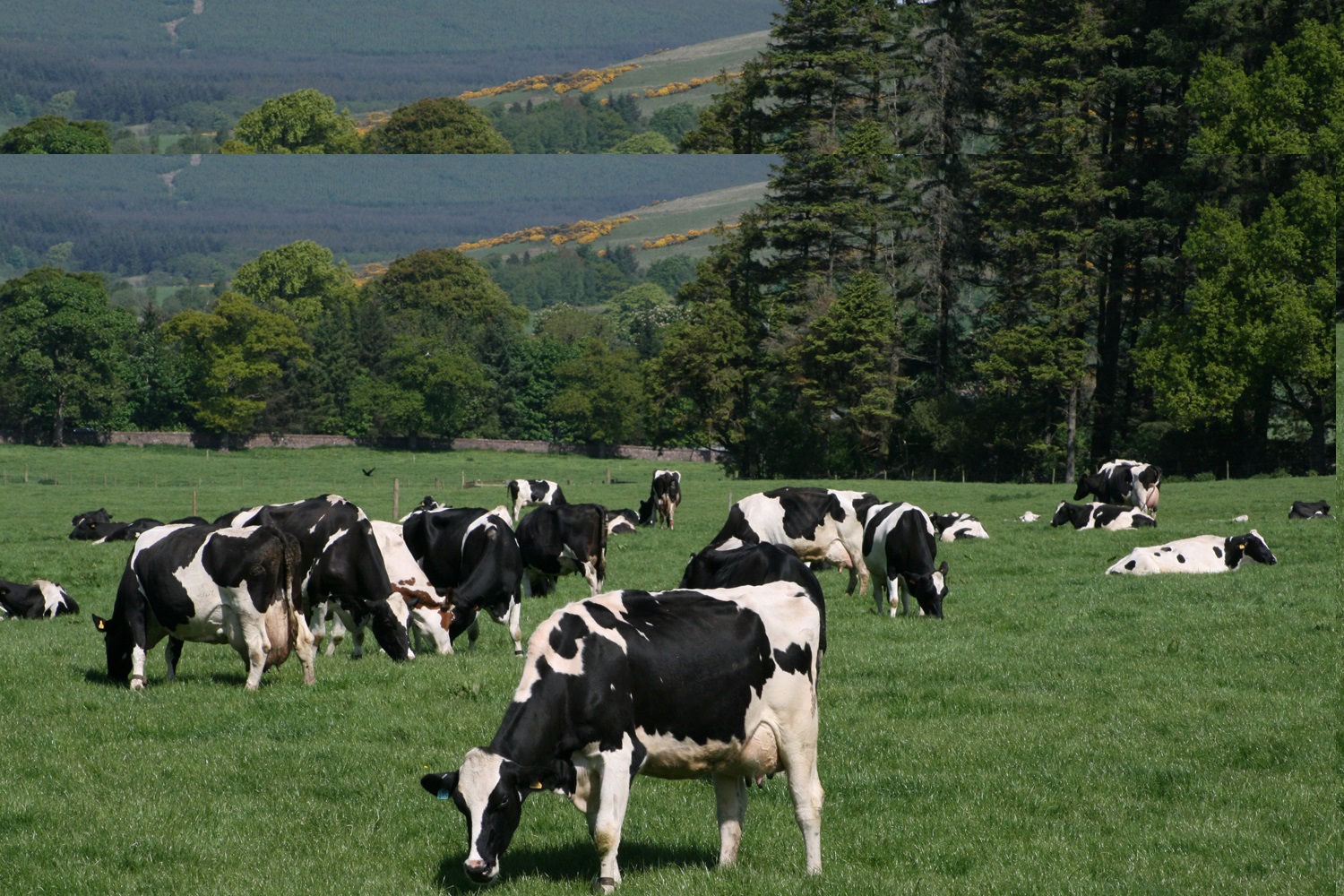Are your cows being fed sufficiently at grass?
15 August 2023As the longest day is now well past and nights are starting to draw in, milk production from grass is likely not as much as you think it is! Cows tend to graze less at night – they are prey animals and will gather together as a herd due to their strong protection behaviour. The average number of daylight hours in central Scotland is around 17.5 hours in June but falls to just under 14 hours by the end of August. On average cows will graze for about 8 hours a day but grazing time will decline as the season progresses.

Grass quality and milk potential
Grass quality may also decline through the grazing season, especially as the cows have been round the grazing platform a number of times, although quality will very much depend on how grazing residuals are managed. According to Grasscheck GB (for w/b 7th August), current grass quality across dairy, beef and sheep farms in Scotland is 16.9% dry matter, 19.7% crude protein and 10.9MJ/kg DM. A 650kg spring calving dairy cow is estimated to eat just 13.5kg dry matter of grass in August and this equates to 13.6 litres of milk when accounting for maintenance (75MJ) and assuming it takes 5.3MJ to produce 1 litre of milk.
Weather impacts
Remember weather conditions will have a huge impact on how much milk is produced from grass. Under wet conditions, if grass has a dry matter content of only of 12%, then in theory cows would have to eat 112kg fresh weight of grass to achieve 13.5kg of dry matter. An intake of much more than 75kg is unlikely and 75kg of grass at 12% dry matter and 10.9MJ/kg DM would only support 4.4 litres of milk.
Overestimating milk from grass
Therefore, the question to ask yourself is: are you feeding sufficient buffer feed at this time of year to avoid cows milking off their backs and harming fertility? The key is not to overestimate how much grass is supporting. It can be difficult to notice body condition loss until it is too late, and the danger is that cows come into the shed too lean and don’t milk well in the early part of the winter. The knock-on effect is poorer fertility, and this is likely to be more of an issue for summer calving cows. If they fail to conceive at the right time, they are at risk of falling outwith the desired calving pattern and may potentially increase the voluntary culling rate.
A metabolic profile test can be used to see whether the cows’ energy requirements are being met. Cows in poor energy status in the early lactation group could be a sign of poor nutrition during the dry period, but if cows in the mid lactation group are also struggling with their energy status, this could imply underfeeding at grass. Another indicator of insufficient energy intake is a low milk protein percentage, (around 3% or less) which reflects energy status over the last 6-8 weeks.
Managing condition
To best manage body condition, look at separating early lactation cows, any thin cows and those not in calf into a separate group for buffer feeding and ensure that the buffer is tailored to current grass availability and quality. Alternatively, house these cows at night with access to more feed. Not only will this help maintain milk yields, but protein and butterfat percentage should also benefit. Keeping the dry matter intake up and maintaining body condition should help improve cycling and conception rates and ensure cows enter the housing period in optimal condition to support winter milk production. At this time of year, with good grazing management, low yielders giving less than 25 litres can be maintained on grass and parlour cake alone.
For more advice on nutritional management of cows at grass contact the Farm Advisory Service on 0300 323 0161 or email advice@fas.scot.
lorna.macpherson@sac.co.uk; 07760990901
Sign up to the FAS newsletter
Receive updates on news, events and publications from Scotland’s Farm Advisory Service
